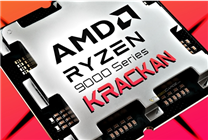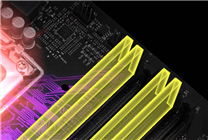AMD Ryzen 9000G APU: Anticipation Meets Disappointment
Summary:
- AMD’s Ryzen 9000G series is set to launch, but expectations may fall short of reality.
- Featuring limited specifications and potential power constraints, the new APUs raise concerns.
- The prioritization of mobile products may further delay advancements in desktop versions.
Introduction
On October 21st, AMD is preparing to introduce its latest APU, the Ryzen 9000G series. Long recognized for providing a compelling balance of performance and cost, the significance of AMD’s APU lineup is hard to overlook. Unfortunately, signs suggest that AMD may not be investing the necessary attention into its desktop APUs lately, likely due to their limited profitability.
Upcoming Release: Ryzen 9000G
The long-awaited Ryzen 9000 series was first revealed some time ago, and the imminent arrival of the Ryzen 9000G is generating both excitement and skepticism. The specifications indicate that the new APUs may not deliver the performance enhancements that many enthusiasts were hoping for.
Technical Insights
Recent updates in the AGESA 1.2.7.0 microcode for motherboard manufacturers point to two new series: Krackan Point and Krackan Point 2. These are likely components of the Ryzen 9000G lineup. The Krackan Point series, primarily targeting low-end mobile devices, includes the Ryzen AI 7 350 and Ryzen AI 5 340/330 models.
Key specifications for the Krackan Point series include:
- Cores: Up to 8 cores and 16 threads
- Cache: 24MB
- Boost Clock: 5.0GHz
- GPU: 8 RDNA3.5 cores
- NPU: 50 TOPS
- Thermal Design Power (TDP): Up to 54W
In a desktop setting, the performance is expected to be roughly equivalent to the Ryzen 7 9700G, with potential for a higher TDP closer to 65W.
Expectations vs. Reality
Initially, there was widespread speculation that the Ryzen 9000G series would leverage the more powerful Strix Point architecture, which features the Ryzen AI 9 300 series. This architecture is known for its higher specifications, including:
- Cores: Up to 12 cores and 24 threads
- Cache: 36MB
- Boost Clock: 5.1GHz
- GPU: 16 cores
- TDP: 54W
However, the lack of clear indications for the Strix Point’s desktop variant raises concerns. Given the soaring demand for mobile products—particularly notebooks and portable devices—AMD’s focus appears to be skewed towards maximizing production for these higher-margin segments, leaving desktop applications on the backburner.
Market Dynamics
The shift in AMD’s prioritization is understandable. The increasing popularity of mobile devices often dictates resource allocation. The cost of manufacturing mobile Ryzen APUs has risen considerably, doubling from the previous generation. This trend suggests that AMD may not have adequate production capabilities to support desktop APU releases, especially when balancing consumer demand and profit margins.
Conclusion
As AMD gears up for the release of the Ryzen 9000G series, current insights paint a mixed picture. While the APU family has historically offered an attractive option for budget-conscious consumers, the limitations in power and specifications of the upcoming models have incited concerns. Enthusiasts and professionals alike will be keeping a close eye on future product announcements, hoping for substantial advancements that might renew excitement in AMD’s desktop APU lineup.
Final Thoughts
With the imminent launch of the Ryzen 9000G, users can expect a product that aligns more closely with low-end market expectations. As mobile technology continues to dominate AMD’s focus, the future of desktop APUs may require patience and hope for more robust offerings down the line.






